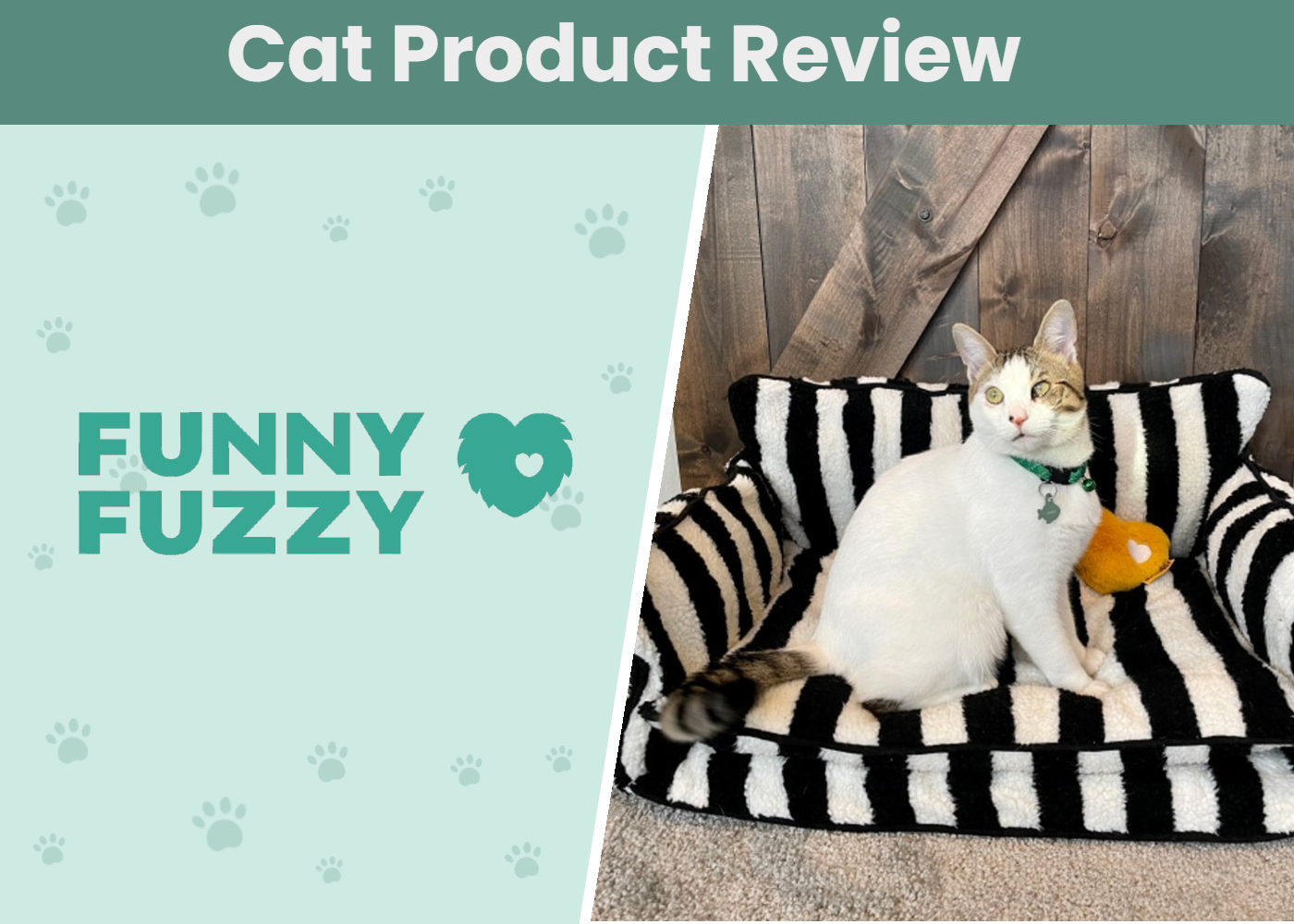Review Summary
We give Boots and Barkley Cat Toys a rating of 4.7 out of 5 stars.
Introduction
Finding the best toys for your cat can be tricky, and the variety of brands out there can be overwhelming. If you like to shop at Target, you’ve probably seen Boots and Barkley toys on the shelves. This brand makes a variety of pet products for cats and dogs, including lots of fun and exciting cat toys. We love the variety available in their toys and find that they generally are a good value for their price. Read on to learn more about Boots and Barkley’s cat toys.
At a Glance: The Best Boots and Barkley Cat Toys:
| Image | Product | Details | ||
|---|---|---|---|---|
| Best Overall |

|
Boots and Barkley Fish Tacos Cat Toy |
|
CHECK PRICE |

|
Boots and Barkley Wand Cat Toy |
|
CHECK PRICE | |
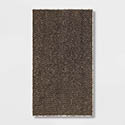
|
Boots and Barkley Cat Scratcher |
|
CHECK PRICE | |
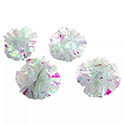
|
Boots and Barkley Crinkle Balls Cat Toys |
|
CHECK PRICE | |
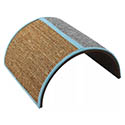
|
Boots and Barkley Cat Wave Scratcher |
|
CHECK PRICE |
Boots and Barkley Cat Toys Reviewed
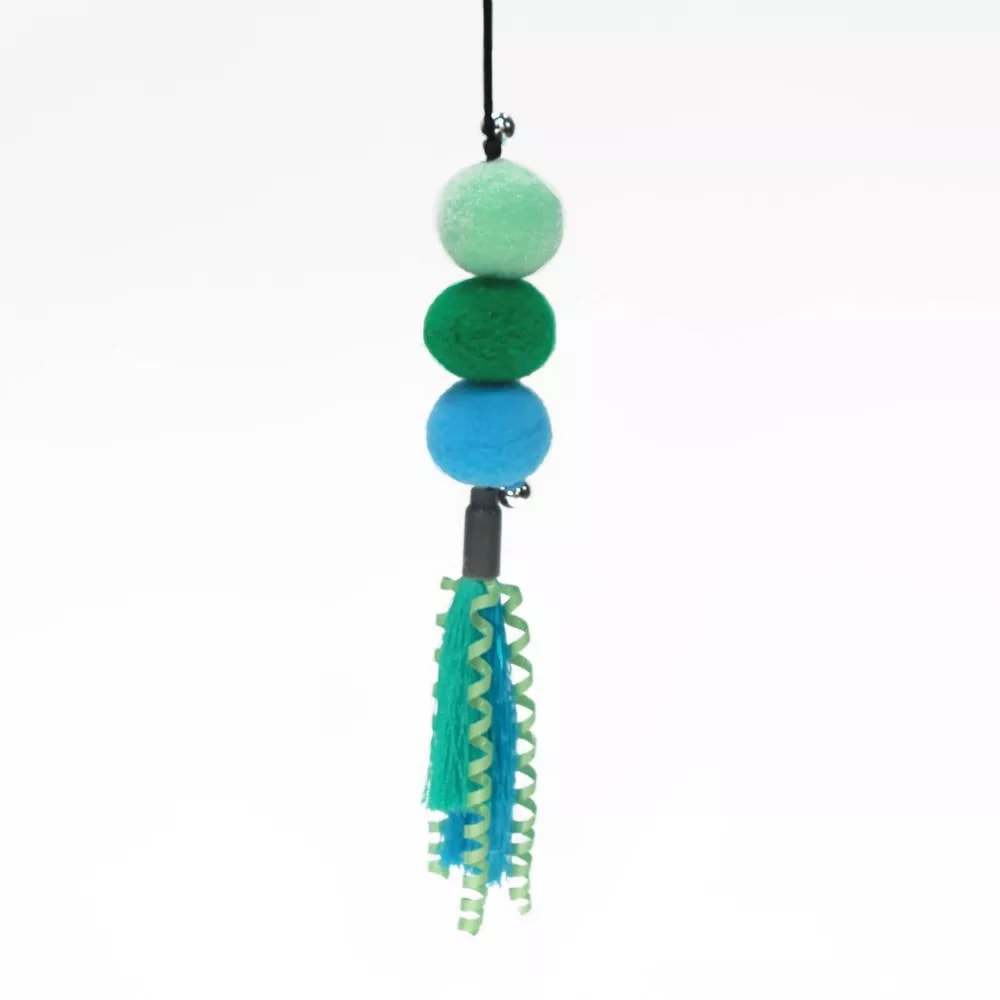
Boots and Barkley is Target’s in-store brand for pet products for cats and dogs, including equipment, bedding, and toys. They have a variety of products, like a wide range of cat toys, and are sold online and in Target stores. Their cat toys include all sorts of great products, including plush toys, wands, ball track toys, scratchers, and cat tunnels. We love Boots and Barkley in general, finding them to be one of the lowest-cost toy vendors out there while still generally making good quality products.
Who Makes Boots and Barkley and Where Is It Produced?
Boots and Barkley cat toys are made by Target. Boots and Barkley toys are generally retailed via Target, although some toys are resold by other vendors as well. Their manufacturing process varies depending on the toy, but most are imported from outside the United States without further information given.
Which Type of Cat is Boots and Barkley Best Suited For?
In general, Boots and Barkley toys are made to fit the needs of a variety of cats. Some of their products are multi-sized to allow for larger or smaller cats, and a few are designed for use by kittens in particular. Because of this, they’re great for most pets and pet owners.
Which Type of Cat Might Do Better With a Different Brand?
Although these toys work well for most cats, their toys aren’t built for particularly destructive or hard-wearing cats. If your cat can tear apart most cat toys easily, you’ll likely do better with a heavy-duty cat toy brand specifically made for powerful cats. In addition, larger cats may be too large for some of the size-specific toys such as scratchers and cat caves. You can always measure before purchasing if you’re worried about your cat’s size or weight.
Are Boots and Barkley High Quality Toys?
The quality of a Boots and Barkley toy depends on the specific product. In general, their toys appear to be a good quality for their price. However, they are still low-cost toys and most are made of materials such as cardboard and polyester that won’t hold up to heavy wear and tear. Because of that, it’s good to read reviews of each product before you buy, especially the more expensive products that you might expect to be using for longer.
A Quick Look at Boots and Barkley Cat Toys
- Low cost
- Usually high quality for price
- Wide variety of toys
- Cute and colorful designs
- Mostly just available at Target
- Most products manufactured outside of the US
- Not ideal for large or destructive cats
- Quality can vary
Reviews of the 3 Best Boots and Barkley Cat Toys
1. Boots and Barkley Glitter Fish Tacos Cat Toy

Right now, Boots and Barkley’s best-selling cat toy is this exciting glitter fish taco toy. With a polyester shell and filling plus some catnip stuffing, this toy is a unique and fun play on traditional plush cat toys. The glittery fish scales catch the light and add some exciting texture play to the toy, keeping cats engaged longer. The taco toy comes in a two pack that makes it an even more economical purchase. Reviewers are generally positive about this toy, noting that it is sturdy and engaging for their cats.
We love this toy and think it’s perfect for the average pet owner. But it might not be the best choice for consumers trying to make more environmentally conscious choices. Like most low-cost cat toys, these fish taco toys are made mainly of plastic-based polyester, a less environmentally friendly choice. Because of this, some owners may prefer to pass it up for a different brand of toy.
- Low cost
- Sturdy construction
- Engaging textures and scents
- High plastic content
2. Boots and Barkley Tassel Wand Cat Toy
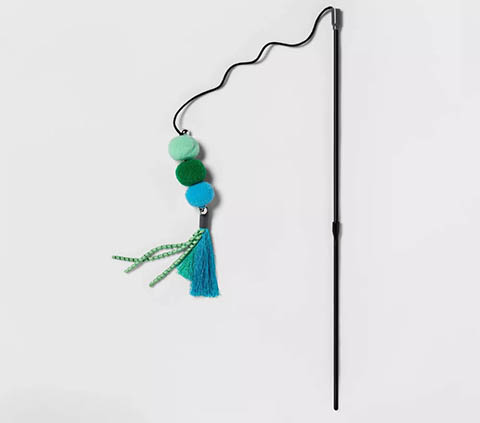
Another popular Boots and Barkley Toy, the Tassel Wand Cat Toy is a colorful and engaging wand toy that lets you play with your cat all day long. This wand toy excites kittens and cats of all ages with its bright pom poms, swishy tassel, and exciting jingle bell. The wand comes in two parts that snap together to give you a sturdy 17” handle, with the string adding length beyond that. Wand toys are a great toy to encourage interaction between you and your cat, making them more stimulating than solo play toys.
Although most reviewers gave positive reviews, there were a few consistent concerns brought up. A small but not insignificant proportion of reviewers reported that their cat easily and quickly broke the toy, sometimes on the first day. If your cat has a history of being rough on toys, a sturdier wand may be in order. Another major concern was the tassel string. Many reviewers noted that the tassel shed over time, leaving short strings around their cats’ play area that might be a health hazard if ingested. One reviewer even noted finding a tassel string in their cat’s hairball. Because of this, it’s important to use caution with this toy.
- Engaging, colorful wand toy
- Low cost
- Encourages interaction
- Shedding tassel may be health hazard
- Some cats broke quickly
3. Boots and Barkley Cat Scratcher
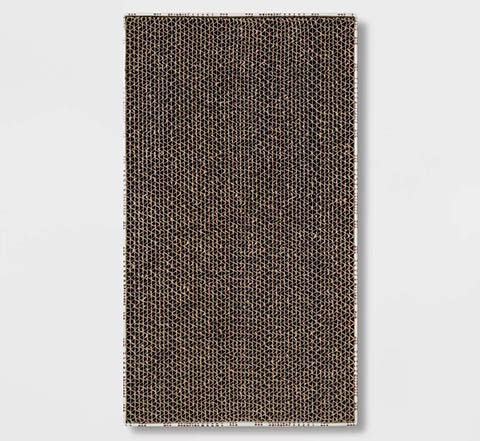
This 18×10” scratcher is another popular favorite for the brand, with layers of corrugated cardboard glued into a sturdy and satisfying block. Many cats love the sound and texture of scratching cardboard and will enjoy picking at this cardboard scratcher. The large size makes it ideal for all but the biggest cats, while smaller cats will enjoy it too. It comes with a packet of catnip that can be sprinkled into the scratcher to attract your cat’s interest and stimulate scratching.
Just as a warning, cardboard scratchers do break down over time, leaving small “shavings” in the area that will need regular cleanup. They’ll also need replacing after a few months of wear and tear. Some owners prefer to use other types of scratchers to eliminate the mess. One drawback of this scratcher’s design is that the cardboard is set into a tray that prevents cats from scratching at both sides of the scratcher, shortening its lifespan. However, this is an overall well-designed and constructed product.
- Large, comfortable flat scratcher
- Comes with catnip packet
- Set in sturdy cardboard frame
- Not dual-sided
- Cardboard scratchers can be messy
 Conclusion
Conclusion
Overall, Boots and Barkley is a great option for most pet owners. Their toys are high enough quality that most cats will be happy with them and not wear through them too quickly, although some are better designed than others. They also have quite a large variety of products, making them ideal for all kinds of cat toys. If you have a particularly large cat, or if your cat is good at destroying toys quickly, you may want to look for a toy brand designed to be heavy-duty, but these toys are ideal for the general owner.
Contents
- Introduction
- At a Glance: The Best Boots and Barkley Cat Toys:
- Boots and Barkley Cat Toys Reviewed
- Who Makes Boots and Barkley and Where Is It Produced?
- Which Type of Cat is Boots and Barkley Best Suited For?
- Which Type of Cat Might Do Better With a Different Brand?
- Are Boots and Barkley High Quality Toys?
- A Quick Look at Boots and Barkley Cat Toys
- Reviews of the 3 Best Boots and Barkley Cat Toys
- 1. Boots and Barkley Glitter Fish Tacos Cat Toy
- 2. Boots and Barkley Tassel Wand Cat Toy
- 3. Boots and Barkley Cat Scratcher
- Conclusion










